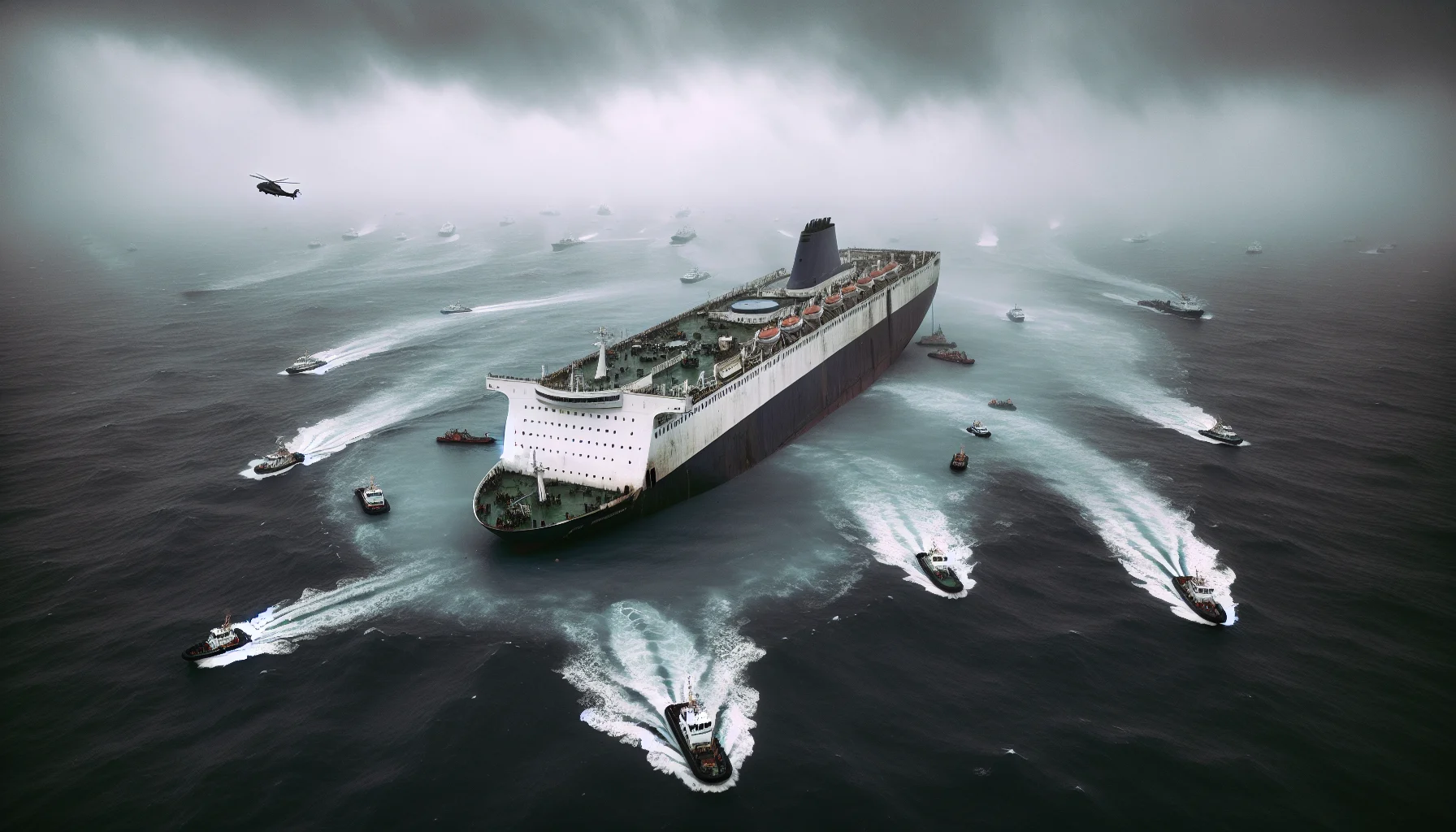
2014 South Korean Ferry Disaster
by: The Calamity Calendar Team
April 16, 2014
Setting Sail into Tragedy
In the quiet prelude of April 15, 2014, a sense of excitement buzzed among the 325 students of Danwon High School as they boarded the MV Sewol ferry. It was a school trip meant to embody adventure and discovery, offering a temporary escape from the rigors of school life. Operated by the Chonghaejin Marine Company, the ferry embarked from Incheon, setting a course for Jeju Island, a popular tourist destination known for its beautiful landscapes and serene beaches. Yet, lurking beneath the surface was a series of oversights and critical errors that would soon divert this voyage into a national catastrophe.
Overlooked Warnings
The MV Sewol, a vessel not notably old in maritime standards, had undergone significant modifications, increasing its passenger capacity—changes that overshadowed the necessity for corresponding updates to its stability protocols. Concerns had been raised over these alterations, where profit margins dangerously overtook passenger safety. Additionally, habitual overloading of cargo further skewed the vessel's stability, a regular practice purported to maximize its economic efficiency.
The Day of Skepticism
April 16, 2014, unfolded like an ordinary day as the MV Sewol glided through the Maenggol Channel's waters. That morning, the calm was betrayed by an ominous tilt at 8:48 AM KST. A shift in cargo was initially suspected, but it quickly became apparent that the ferry was unnaturally listing heavily to one side. The impending disaster unraveled rapidly, catching the crew in a web of missteps and fatal decisions.
The Crux of Communication
At 8:52 AM, the onslaught of confusion began with a faltering cry for help to Jindo's Vessel Traffic Service. Vital minutes were lost as the crux of the emergency failed to resonate within that call, muddling the urgency of the plight onboard. While the Coast Guard made strides to respond, their efforts were obstructed by the fog of miscommunications and underestimated severity.
Decisions That Cost Lives
By the time the clock struck 9:30 AM, disaster advanced into urgency. Announcements echoed through the vessel, instructing passengers to remain within their cabins—a command intended to maintain order but, in turn, unknowingly cementing the fate of those inside. The ferry's tilt had become a perilous lean, beyond 50 degrees, mirroring the panic brewing in the hearts of those trapped within.
The Capsizing
Ten o'clock marked the harrowing symbolism of the MV Sewol's final moments above water—a vessel now lying on its side, fighting a losing battle against the sea. This haunting image would linger in the minds of many. Rescue efforts struggled against time, and the discordance of earlier actions by crew members meant precious opportunities for evacuating passengers had slipped by. Within the next hour, the vessel succumbed, capsizing by 11:18 AM and surrendering completely to the ocean's grasp, sealing the fates of hundreds.
Thanks for subscribing!
A Nation in Mourning
In the wake of this tragedy, South Korea reeled from the profound losses endured—304 lives, mostly vibrant young students with hopeful futures, were cruelly extinguished. Public outrage followed, directed towards the perceived ineptitude in response times and the initial instructions that proved so detrimental. Financial blows hit hard as the South Korean government and the ferry company faced lawsuits and demands for accountability, both from the grieving families and a nation unaccepting of institutional failures.
A Resounding Call for Reform
Search, rescue, and recovery efforts materialized quickly into one of the largest of its kind in South Korean history, involving military personnel, civilian divers, and international aid. Yet, these efforts often carried a weight of resignation, the hope of finding survivors waning with each passing day. Concurrently, a national introspection unfolded—a demand for change echoed across South Korea.
The Ripple Effect
The disaster not only triggered personal grief but sparked a political fervor that rippled through the fabric of South Korean governance. Public dissatisfaction was palpable, culminating in political instability that ultimately influenced shifts in leadership. President Park Geun-hye saw her administration scrutinized, the undermining of public trust magnified by daily reminders of the tragedy.
Legacies and Lessons
The ensuing investigations stripped away the veil on systemic inadequacies entrenched in maritime operations—bureaucratic oversight in safety regulations, a lack of accountability, and the peril of complacency. The captain and crew, deemed negligent, faced sentences ranging from imprisonment to life, serving as formidable warnings to an industry forced to reconsider its priorities.
Moving Forward
The legacy of the Sewol disaster continues to affect South Korean policies today, guiding an era of reformation within its maritime sectors. Tightened regulations, improved emergency protocols, and harsher penalties for companies failing to meet safety standards became new pillars upon which future voyages rested. Annual commemorations and advocacy efforts persist, ensuring the memories of those who perished aboard the MV Sewol are forever honored and the mistakes never repeated.
In a nation still healing, the sinking of the MV Sewol stands as a somber reminder of the priceless value of lives over profit and the enduring cost when vigilance is overshadowed by neglect.
Stay in the Loop!
Become a Calamity Insider and get exclusive Calamity Calendar updates delivered straight to your inbox.
Thanks! You're now subscribed.